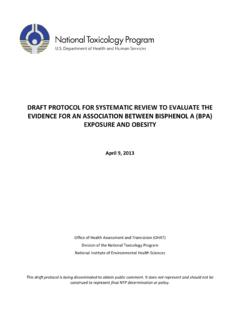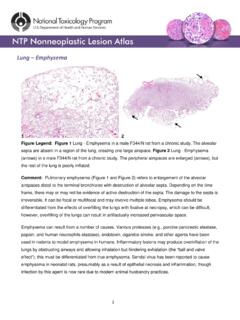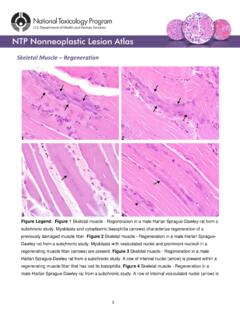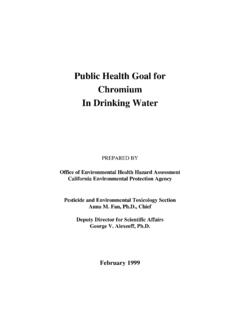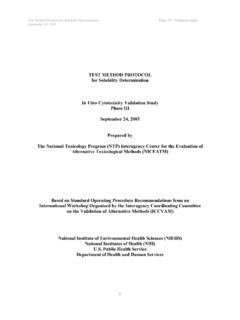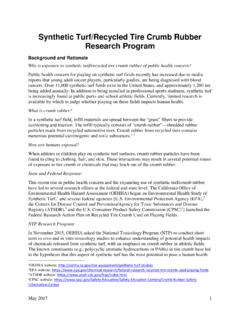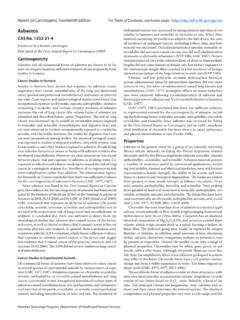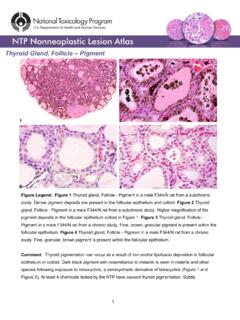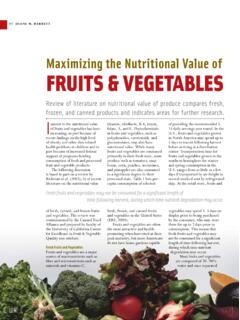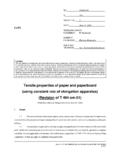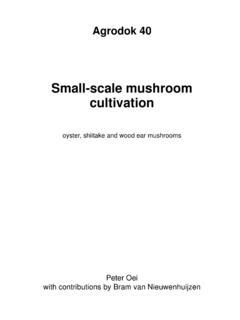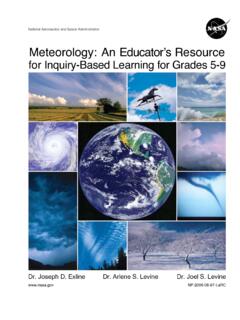Transcription of OECD Test Guideline 407: Repeated Dose 28-day Oral ...
1 OECD/OCDE 407 Adopted: 3 October 2008 OECD, (2008) You are free to use this material for personal, non-commercial purposes without seeking prior consent from the OECD, provided the source is duly mentioned. Any commercial use of this material is subject to written permission from the OECD. OECD GUIDELINES FOR THE TESTING OF CHEMICALS Repeated Dose 28-day Oral Toxicity Study in Rodents INTRODUCTION 1 OECD Guidelines for the Testing of Chemicals are periodically reviewed in the light of scientific progress. The original Test Guideline 407 was adopted in 1981. In 1995 a revised version was adopted, to obtain additional information from the animal used in the study, in particular on neurotoxicity and immunotoxicity.
2 2 In 1998, the OECD initiated a high-priority activity, to revise existing Test Guidelines and to develop new Test Guidelines for the screening and testing of potential endocrine disruptors (8). One element of the activity was to update the existing OECD Guideline for Repeated dose 28-day oral toxicity study in rodents (TG 407) by parameters suitable to detect endocrine activity of test substances. This procedure underwent an extensive international program to test for the relevance and practicability of the additional parameters, the performance of these parameters for chemicals with (anti)oestrogenic, (anti)androgenic, and (anti)thyroid activity, the intra- and interlaboratory reproducibility, and the interference of the new parameters with those required by the prior TG 407.
3 The large amount of data thereby obtained has been compiled and evaluated in detail in a comprehensive OECD report (9). This updated Test Guideline 407 is the outcome of the experience and results gained during the international test program. This TG 407 allows certain endocrine mediated effects to be put into context with other toxicological effects. INITIAL CONSIDERATIONS AND LIMITATIONS 3 In the assessment and evaluation of the toxic characteristics of a chemical, the determination of oral toxicity using Repeated doses may be carried out after initial information on toxicity has been obtained by acute toxicity testing.
4 This TG is intended to investigate effects on a very broad variety of potential targets of toxicity. It provides information on the possible health hazards likely to arise from Repeated exposure over a relatively limited period of time, including effects on the nervous, immune and endocrine systems. Regarding these particular endpoints, it should identify chemicals with neurotoxic potential, which may warrant further in-depth investigation of this aspect, and chemicals that interfere with thyroid physiology. It may also provide data on chemicals that affect the male and/or female reproductive organs in young adult animals and may give an indication of immunological effects.
5 4 The results from the TG 407 should be used for hazard identification and risk assessment. The results obtained by the endocrine related parameters should be seen in the context of the OECD Conceptual Framework for Testing and Assessment of Endocrine Disrupting Chemicals (11). The method comprises the basic Repeated dose toxicity study that may be used for chemicals on which a 90-day study is not warranted ( when the production volume does not exceed certain limits) or as a preliminary to a long-term study. The duration of exposure should be 28 days. 5 The international program conducted on the validation of parameters suitable to potentially detect endocrine activity of test substance showed that the quality of data obtained by this TG 407 will depend much on the experience of the test laboratory.
6 This relates specifically to the histopathological determination of cyclic changes in the female reproductive organs and to the weight determination of the 407 OECD/OCDE OECD, (2008) 2 small hormone dependent organs which are difficult to dissect. A guidance on histopathology has been developed (19). It is available on the OECD public website on Test Guidelines. It is intended to assist pathologists in their examinations and help increase the sensitivity of the assay. A variety of parameters were found to be indicative of endocrine-related toxicity and have been incorporated in the TG.
7 Parameters for which insufficient data were available to prove usefulness or which showed only weak evidence in the validation programme of their ability to help in detection of endocrine disrupters are proposed as optional endpoints (see Annex 2). 6 On the basis of data generated in the validation process, it must be emphasized that the sensitivity of this assay is not sufficient to identify all substances with (anti)androgenic or (anti)oestrogenic modes of action (9). The TG is not performed in a life-stage that is most sensitive to endocrine disruption. The TG nevertheless, during the validation process identified compounds weakly and strongly affecting thyroid function, and strong and moderate endocrine active substances acting through oestrogen or androgen receptors, but in most cases failed to identify endocrine active substances that weakly affect oestrogen or androgen receptors.
8 Thus it can t be described as a screening assay for endocrine activity. 7 Consequently, the lack of effects related to these modes of action can not be taken as evidence for the lack of effects on the endocrine system. Regarding endocrine mediated effects, compound characterization should not therefore be based on the results of this TG alone but should be used in a weight of evidence approach incorporating all existing data on a chemical to characterise potential endocrine activity. For this reason, regulatory decision making on endocrine activity (compound characterisation) should be a broadly based approach, not solely reliant on results from application of this TG.
9 8 It is acknowledged that all animal-based procedures will conform to local standards of animal care; the descriptions of care and treatment set forth below are minimal performance standards, and will be superseded by local regulations where more stringent. Further guidance of the humane treatment of animals is given by the OECD (14). 9 Definitions used are given in Annex 1. PRINCIPLE OF THE TEST 10 The test substance is orally administered daily in graduated doses to several groups of experimental animals, one dose level per group for a period of 28 days. During the period of administration the animals are observed closely, each day for signs of toxicity.
10 Animals that die or are euthanised during the test are necropsied and at the conclusion of the test surviving animals are euthanised and necropsied. A 28 day study provides information on the effects of Repeated oral exposure and can indicate the need for further longer term studies. It can also provide information on the selection of concentrations for longer term studies. The data derived from using the TG should allow for the characterization of the test substance toxicity, for an indication of the dose response relationship and the determination of the No-Observed Adverse Effect Level (NOAEL). DESCRIPTION OF THE METHOD Selection of animal species 11 The preferred rodent species is the rat, although other rodent species may be used.
